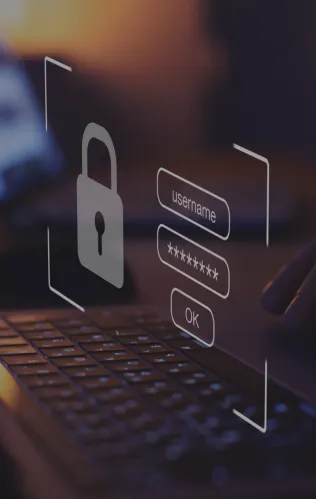All businesses today depend on having immediate and seamless access to all data types. This is no exception for educational institutions. By linking third-party software, your institution can unlock a new level of efficiency and collaboration. Transitioning from conventional to interconnected systems necessitates a well-rounded understanding of the intricacies of connectivity. Interoperability in School Management Systems facilitates the exchange of data and functionalities between different software applications within an educational institution. In particular, this refers to an integration between an existing School Management System and third-party applications.
Efficiency Gaps in Non-Interoperable School Management Systems
In the complex tapestry of educational institutions, the drawbacks of non-interoperable School Management Systems cast a shadow on operational efficiency. Where there is a lack of exchange among disparate pieces of data, the ability to share and utilize information effectively is impeded. This ultimately hinders intelligent and proactive decision-making.
Communication becomes a stumbling block in non-interoperable systems, with disjointed tools leading to delays in disseminating vital updates. This lack of cohesion can compromise the institution’s ability to respond promptly to emerging situations, affecting the overall responsiveness of educators and administrative staff.
Workflow inefficiencies compound the issue, forcing staff members to navigate through various platforms to complete routine tasks. The absence of interoperability transforms the School Management process into a laborious undertaking, sapping both time and resources that could otherwise be channeled into enriching the educational experience. Administratively, non-integrated systems pose challenges in data handling. Manual entry, duplicate records, and the absence of real-time synchronization contribute to errors. Thus, an environment rife with inefficiencies is created.

Streamlining Administrative Tasks with Integrated Platforms
The automation of core tasks, such as attendance tracking, grade management, and scheduling, unfolds as a game-changer in the daily operations of schools. Manual data entry gives way to automated systems via the integration of third-party apps. This connection alleviates the burden on administrative staff in addition to minimizing the risk of errors inherent in manual processes. Data now flows effortlessly between various platforms, thereby creating a cohesive environment where accuracy and efficiency coalesce.
Traditionally, attendance tracking and grading operated in silos, with educators toggling between different platforms. However, by bridging the gap between attendance software with grading systems creates a relationship between the two crucial elements of academia. This allows educators to make informed decisions on potential issues for poor academic performance based on the real-time access to both datasets.
Integrating scheduling software with grading systems provides educators with a powerful tool to plan assessment due dates and make informed decisions based on academic performance. By setting assessment deadlines within the scheduling platform, educators align due dates with the academic calendar, promoting clarity for both students and teachers. With immediate insights into grades, educators can identify trends and proactively intervene if a student’s performance shows signs of decline. This timely intervention may involve additional support sessions, personalized guidance, or counseling services.
Improved Communication Channels with Integrated Systems
Effective communication is the cornerstone of a thriving institution, linking school staff, parents, and students in a collaborative partnership. Within the school community, the exchange of information ensures that all stakeholders are well-informed and engaged. Instant messaging tools facilitate real-time communication among educators, administrators, and even students.
Moreover, linking parent portals with other communication channels creates a holistic view for parents, providing them with centralized access to critical information about their child’s academic progress, attendance records, and school updates. This not only keeps parents actively engaged in their child’s educational journey but also establishes a consistent and reliable source of information.

Classter’s Interoperability with Third-Party Apps
At the core of Classter’s integration capabilities is it’s OpenAPI feature, which serves as a bridge to connect Classter’s core features with an extensive array of third-party apps. Ranging from advanced Learning Management System platforms to efficient payment systems, this connectivity ensures that educational institutions can tailor their systems to meet their unique needs. Whether these institutions are using legacy software or the latest tools, the OpenAPI facilitates smooth and effortless integration. This allows for them to maintain their established workflows while harnessing the capabilities of Classter’s software solutions.
Efficiency takes center stage with Classter’s OpenAPI, as it automates repetitive, time-consuming tasks, ranging from attendance tracking to grade reporting. This automation liberates valuable time, enabling institutions to focus on education and growth.
In a world where managing multiple systems can be overwhelming, Classter’s OpenAPI simplifies the process by offering a centralized platform where all tools and applications converge. This integrated approach reduces complexity, enhances user experience, and makes administrative tasks a breeze for educators and staff.
School Management Personalization through Third-Party Integration
The integration of third-party apps into School Management Systems gives educators the ability to customize the learning experience. In particular, by incorporating adaptive learning platforms, interactive resources, and specialized tools, schools empower teachers to personalize their approaches. Real-time insights from integrated apps allow educators to adapt and modify their strategies based on individual student needs.
For students, the integration of third-party apps introduces an opportunity for personalized learning pathways. Adaptive learning platforms analyze student progress, catering to individual strengths and weaknesses. This tailored approach ensures that students advance at their own pace, promoting a more effective and personalized learning experience.
Future-Proofing your School Management System with Integration
By adopting a proactive approach to School Management interoperability with third-party apps, educational institutions position themselves to adapt to emerging EdTech trends. Interoperability serves as the anchor in future-proofing institutions, enabling seamless integration with new technologies. From Artificial Intelligence (AI) and Augmented Reality (AR) to advanced Learning Management Systems (LMS), interoperability ensures that educational institutions can readily incorporate these innovations into their existing systems. This forward-thinking approach streamlines the implementation of new technologies and enhances the overall efficiency of the institution.






